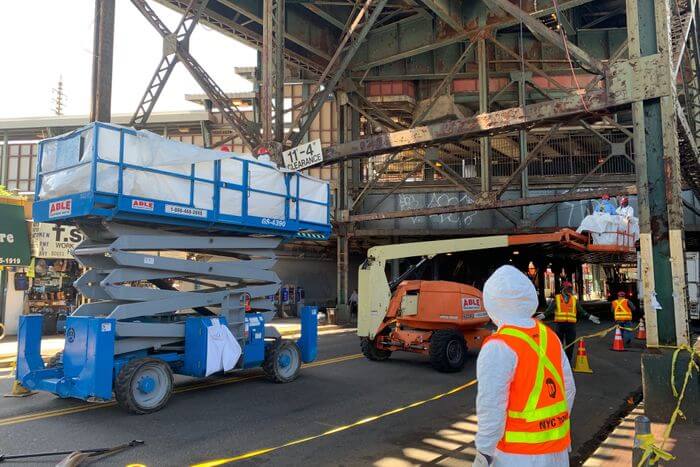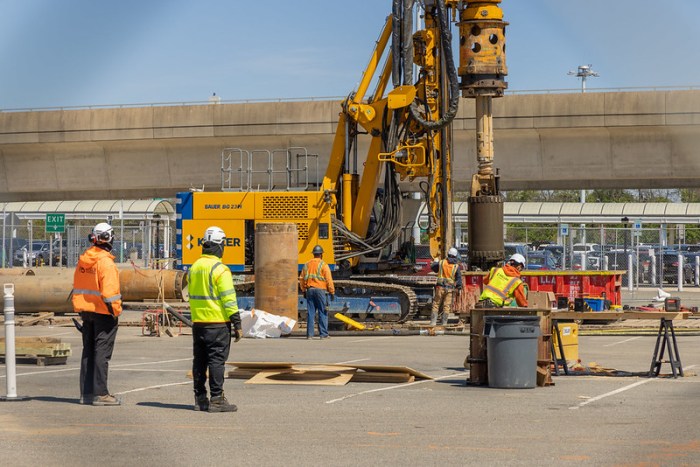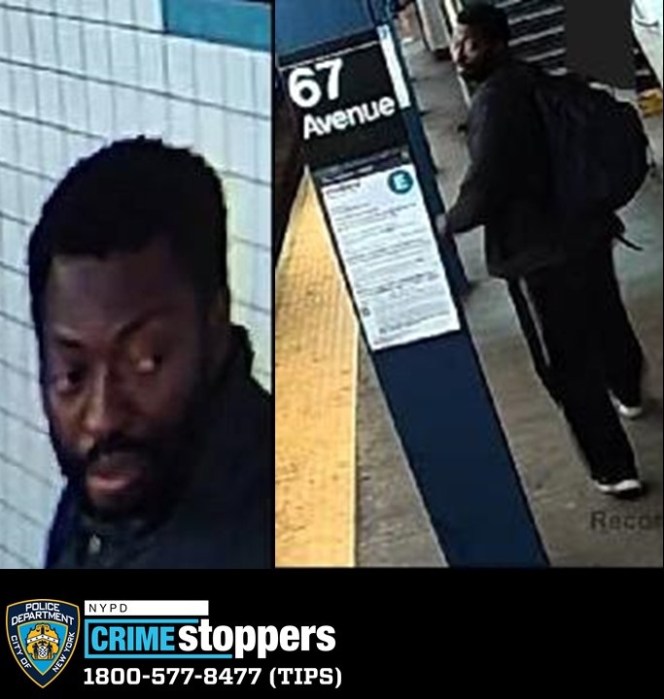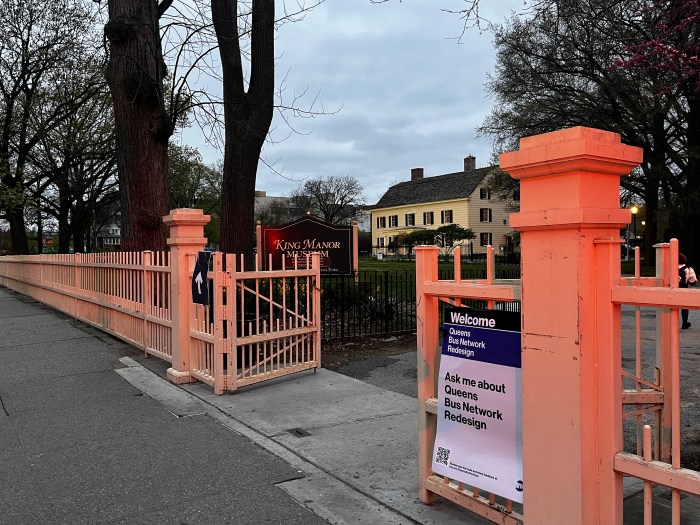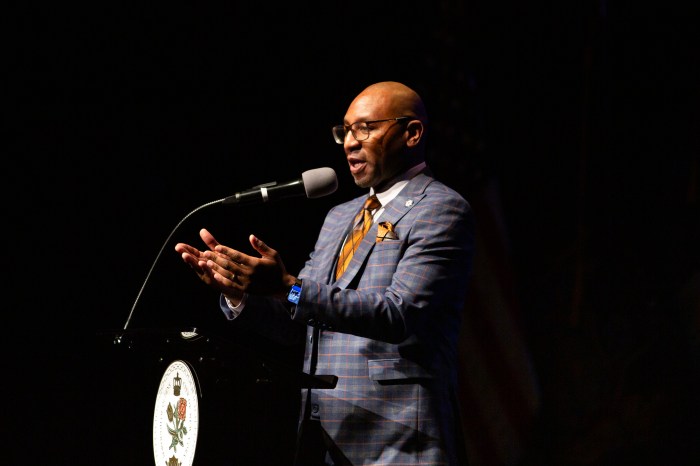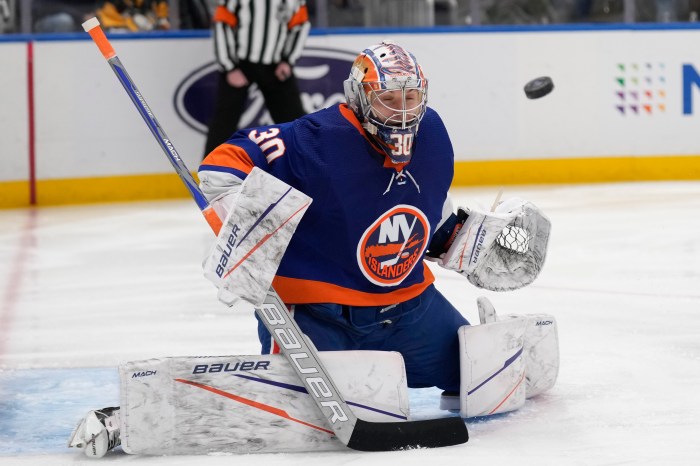By Jose Martinez, THE CITY

This story was originally published on May 23, 2019 by THE CITY.
Even after large pieces of debris plunged from the 7 train’s elevated structure down onto the street several times this year, the MTA isn’t ready to put up safety nets.
Queens Councilmember Jimmy Van Bramer requested netting under the tracks above Roosevelt Avenue following a series of high-profile spills.
But “netting would impede access, close-up inspection, and assessment of corrosion or defects on the structure and cause extensive street level traffic disruption to install and secure,” New York City Transit Authority President Andy Byford wrote in a recent letter to Van Bramer obtained by THE CITY.
Byford wrote that New York City Transit is “exploring engineering designs and preliminary costs” before making a “final determination” on the netting.
Van Bramer in March had asked for the MTA to install netting after debris from the elevated tracks repeatedly plunged onto Roosevelt Avenue. In February, a piece of wood pierced the windshield of a passing for-hire vehicle, prompting a pledge from the MTA to inspect “every inch of elevated tracks in the city.”
A track from the 7 train just crashed down upon a driving car around 65th Street in Woodside, piercing through the windshield. These photos are horrifying! pic.twitter.com/fBjxItlK7Q
— Jimmy Van Bramer (@JimmyVanBramer) February 21, 2019
“Until the MTA is 100 percent certain that nothing is going to fall from those elevated tracks and potentially kill someone, we’ve got to do something to protect the people underneath,” Van Bramer told THE CITY on Wednesday.
‘I Just Walk Quickly’
Some Queens residents said they take extra care when traveling bustling Roosevelt Avenue.
“I just walk quickly when I’m under the tracks,” said Amelia Carrillo, 73. “It’s not like I’m going to walk around with a hardhat on.”
“It’s an old structure,” said Lucas Reyes, 58, as he walked beneath the elevated tracks at 61st Street-Woodside stop. “You don’t want anything falling on your head.”
Byford noted that New York City Transit has nearly completed emergency engineering and maintenance inspections along the No. 7 line’s elevated structure, with crews removing loose materials and spotting steel repair needs.
Two more “blitz inspections” are underway — to replace any missing track baskets that are supposed to keep loose parts from falling on to the street and to make sure track ties are secure.
“I’ve had people tell me they avoid that area now,” Van Bramer said. “I’ve had constituents say, ‘I try not to drive under there, I try not to walk under there.’”
Meanwhile, the first phase of a $60 million project to repaint the 7’s elevated structure and conduct steel repairs is now underway from 72nd to 104th streets.
The contract for the next $56 million phase of the work — from 48th to 72nd streets — will be awarded in June.

